Another career choice gone
This week: Another career choice gone west; More holes: Polytunnel time; ;
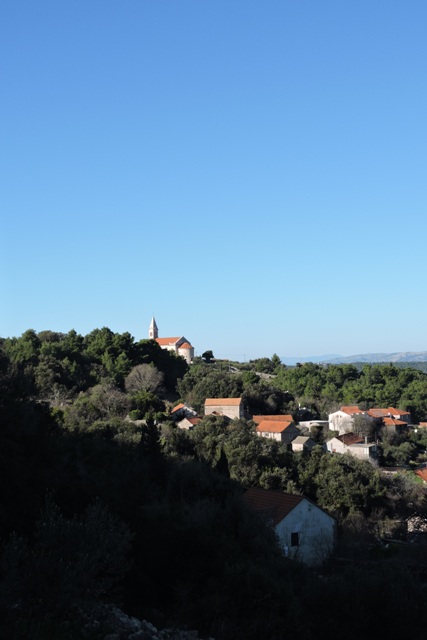
Cold is a relative concept.
It has been cold this week, the coldest week of the winter. However I’m talking about southern Mediterranean cold, NOT northern temperate region cold!
The lowest temperatures have remained above zero, but even so, walking the local paths early in the day, I often see some radiation frost on round level plants.

The felines still join me on my perambulations although they prefer sunshine to shade, and definitely not rain or heavy dew.

I have had the fire let every day, but with high pressure and little wind, there is often a Katabatic air flow down the hill, past my home and onward down to the Stari Grad plain.
Because of this cold downward airflow, I have a fan on the top of the chimney to stop smoke coming down the chimney and inside the dining room.
When I light the fire quite a lot of smoke is generated.

The smoke does not go up though, it rapidly goes down to ground level and then spreads out. I should say that at start up, there is a lot of smoke, but this rapidly diminishes as the fire gets going.

The cold (for here) northern wind this week has been refreshing and should have killed some of the bugs we suffer from. But the wind also brings clear skies.
It does make mornings nice, as the sun comes over the southern hills.
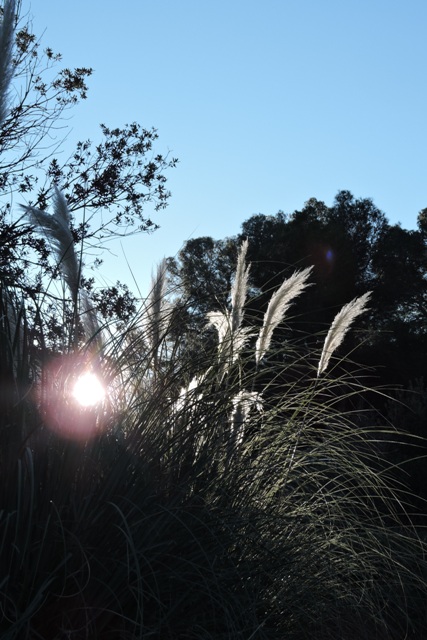
Another career choice gone west…
I have found another career that is just not going to be for me.
To summarise, some years ago I decided that I couldn’t be a pathologist. It was all about the odours that pathologists encounter.
More recently after a visit to my dentist and having had a lot of fingers placed in my mouth, I said to her that I decided that dentistry was not for me. I just don’t like poking around in my mouth, or especially in anyone else’s.
My dentist burst into laughter. It seems she was a forensic odontologist as well…. Each to their own I suppose!
This week I have spent five days in the hall, trying to route the wiring cables for lights, behind the wooden lats in the wall. This is as I described in last week’s blog.
It has taken some time using very fine needle nose plyers and cutters to clear a path between the two layers of lats for the wires.
Once I had a clear space, getting the wires into the wall was not too difficult, but I hit a problem at the transition from the vertical wall to the horizontal void above the ceiling.
There is a beam which runs along the top of the wall and I had to drill a series of holes in the beam, close to the edge, but not too close, before I could even get the first wire and the Anaconda pull though in place.
This is the only ceiling that I haven’t replaced. It is still the original hardboard, installed in 1943 and is without internal insulation. That did make it easy to open,
As a temporary solution, I fixed 6 cm of polystyrene foam board on the underside of the hardboard. This stop-gap solution works, but is not as good a 12 cm layer of proper insulation between the beams.
Before I could drill anything, I carefully removed a 4 cm square piece of the hardboard so I could access the wood underneath.

I quickly realised that this small hole was not going to work. It was like doing keyhole surgery underneath a giant with a darning needle!
Even with some special tools and an endoscope, my fingers were soon aching. I will never pass the training course to be a keyhole surgeon…. Working upside down, using a small screen to view where your tools and fingers are, is just not fun.
It was time for more coffee and a think…
More holes
I decided that it was going to be quicker to open a bigger hole in between beams than waste time and energy trying to thread a camel through the keyhole I had already opened.

And before you ask, yes I do have a camel… It’s still in its box.
The first job was to cut another hole.
I measured one cubit from the first keyhole, then marked a 20 cm square on the ceiling. I carefully cut the square with the oscillating cutter.

I found that The best time to work was around the middle of the day, when the Hall is sunlit, Once the sun drops the room does dark very quickly. That makes working difficult with artificial lighting.
Now I know why keyhole surgeons wear lights on their foreheads.
I got my measurements spot on and I could reach into the hole and feel the head of the Anaconda – and it didn’t bite me – together with the ends of the cables.
Using some acrobatics, I was able to push one end of the cable with one arm, while at the same time pulling the other end up into the void with the other. It still took a couple of hours to get all the cables into place.
The last job was to withdraw the Anaconda, which came out without much of a problem.

Next I cut the cables to size, so at the switch area looked less like a rats nest.
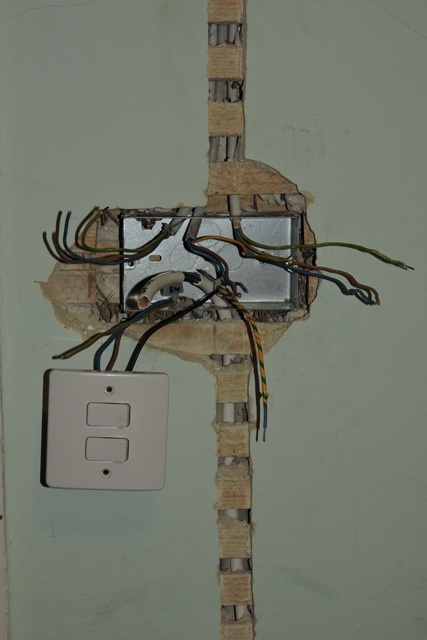
With the wiring cables in place in the Hall floor and that was the task I set out to do at the end of last year, I could connect the light over the stairs.
I spent quite a while trying to find the best place to put the ceiling lamp in the Konoba, so the light output covered the stairs, but also was not at eye level when going up the stairs.
Lighting the stairs is a safety issue, but I didn’t want to dazzle anyone going up the stairs.

When I connected everything to a switch and turned it on, it worked. I’ve fitted switches at the top and bottom of the stairs.
There is a shadow being thrown by the handrail, but I can’t avoid that. The main thing is that the stairs are well lit, by a low voltage, warm white LED.
The switch in the hall is still temporary , although everything is secured and safe. Most of the wiring is not yet live.

Altogether a satisfying, if rather time consuming week.
Polytunnel time
When the sun shines, it gets warm in my polytunnel.
As the days lengthen, so the amount of sun which falls on the polytunnel increases.
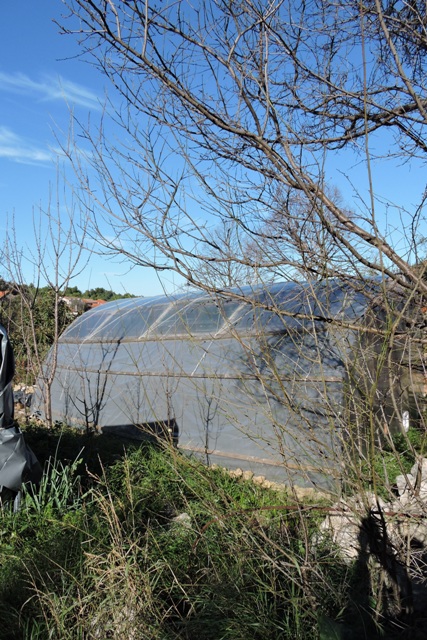
Today when it was just 7ºC outside, it was a balmy 22ºC in the polytunnel.
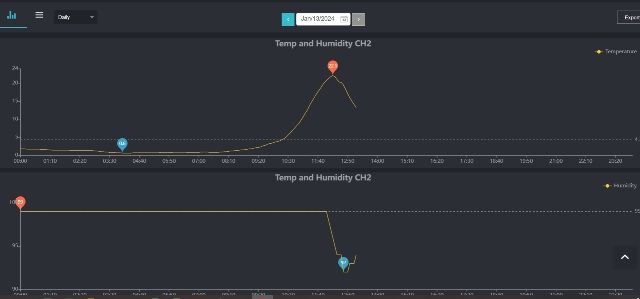
The temperature increases rapidly once the sun hits that area of the Top Orchard. Once the sun dips behind the southern hills, the temperature drops quite quickly.
However it is the 11 day running average temperature which is the important one.
The warmth, moisture and sun has meant that weeds and grass have been growing all winter.

In the middle of the day it has been pleasant working, even tee-shirt weather.
Pulling weeds this week and removing the tomato plants, I dug one out and was surprised that its stem was still green and firm and the roots were still firmly in the soil.

The photo appears to be “soft focus” because the heat and humidity inside affected my camera.
Having dug it out, I decided to replant it.

I have never been able to over winter tomato plants before and am not aware of any perennial varieties, so watch this space.
Elsewhere in the polytunnel, the first Hyacinth flower has appeared.

Despite some cold temperatures, my Bird of Paradise plants are still producing flowers too. NCG
